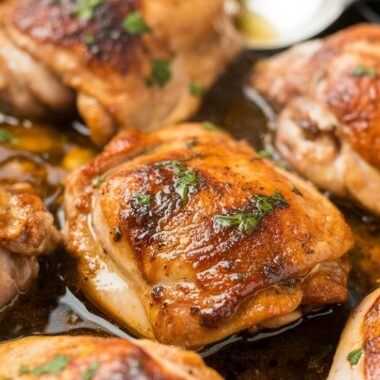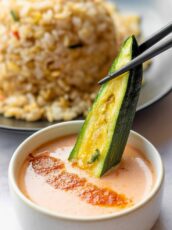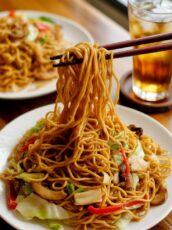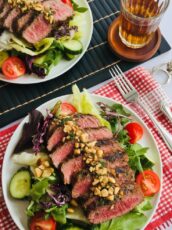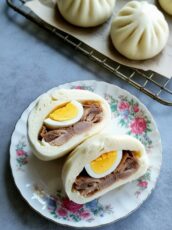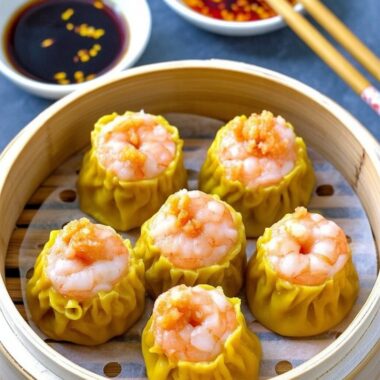Some recipes aren’t just food — they’re memories you can eat.
Growing up, weekends at my house often meant the kitchen counter was dusted in flour and every surface had bowls, dough, and little hands trying to “help” (or sneak a taste). My mom and grandma would knead bao dough by hand for what felt like hours, chatting the whole time. We didn’t have stand mixers — just patience, warm water, and a lot of love.
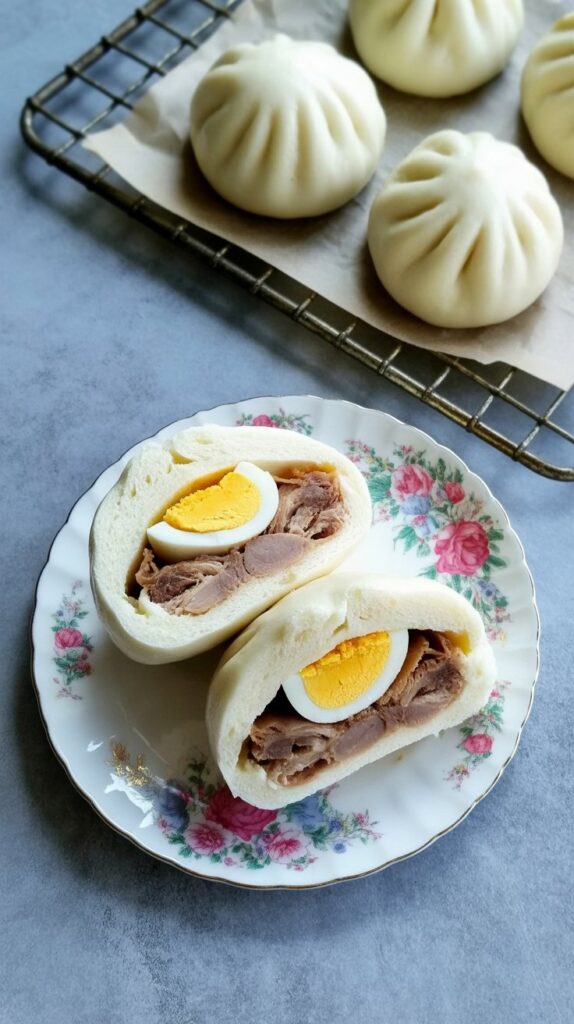
When I met my husband, his mom introduced me to Vietnamese-style Banh Bao. The first time she handed me one, still warm from the steamer, I bit in and got a taste of something familiar yet completely new — soft, fluffy bao with juicy pork, a slice of Chinese sausage, and a quail egg tucked in the middle. It’s hearty, savory, and somehow comforting no matter the time of day.
This recipe blends those two worlds — the Chinese bao I grew up making and the Vietnamese flavors that became part of my family later on.
Why This Recipe Stays in My Family Rotation
- Great for Batch Cooking: I often double this and keep a stash in the freezer. They steam back to life beautifully on busy mornings.
- Filling but not heavy: The pork, mushroom, egg, and sausage combo keeps you satisfied without feeling like you need a nap afterward.
- Perfect for Sharing: In my family, food is a love language. A dozen fresh-steamed buns in a basket can make someone’s day.
- Kid-Approved: The sweet dough and savory filling disappear fast when my kids get their hands on them.
My Thoughts on Dough – Premix or Homemade?
I’ve tried both, and here’s the truth: the premix wins for fluffiness and that perfect white color. I use Kim Tu Thap Banh Bao Mixed Flour, which already has yeast included. It’s easy and reliable — no yellowing, no chewy texture.
If you go homemade, it still works, but the result is denser. My kids notice instantly when it’s not the “usual fluffy” kind. If premix is available to you, it’s worth it.
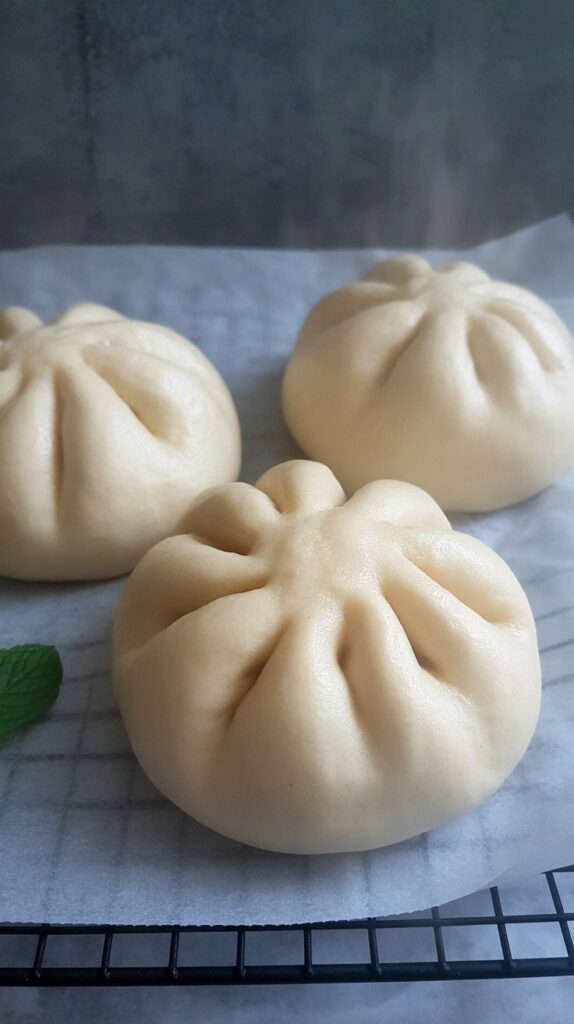
Ingredients I Always Use (and Why)
- Ground Pork with a little fat: Juicy filling beats dry filling every time. If using chicken, go for dark meat.
- Chinese Sausage (Lap Cheong): Salty, sweet, and aromatic — it’s the perfect contrast to the pork.
- Quail Eggs: A little surprise inside. Regular eggs cut into quarters work too.
- Wood Ear Mushrooms: Adds texture without overpowering the flavor. Shiitake works if you can’t find them.
- Onion: Finely chopped so it blends into the pork.
- Fish Sauce + Oyster Sauce: The umami backbone of the filling.
- Sesame Oil: A drop or two makes the aroma irresistible.
- White Vinegar: For bright, white dough (optional, but I always use it).
Step-by-Step: How I Make Banh Bao
- Make the Dough: If using premix, combine warm milk, yeast, and a little sugar to activate. Knead until smooth. Let rise until doubled.
- Prep the Filling: Mix pork, sausage slices, chopped mushrooms, onion, sauces, and seasonings. I mix with my hands — it makes the pork paste-like for a smoother bite.
- Shape and Fill: Flatten a piece of dough, add a pork ball, a slice of sausage, and a quail egg. Pleat the edges (or just pinch them shut if you’re short on time).
- Steam: Use a bamboo or metal steamer over boiling water with a splash of vinegar in it. Steam until fluffy and cooked through.
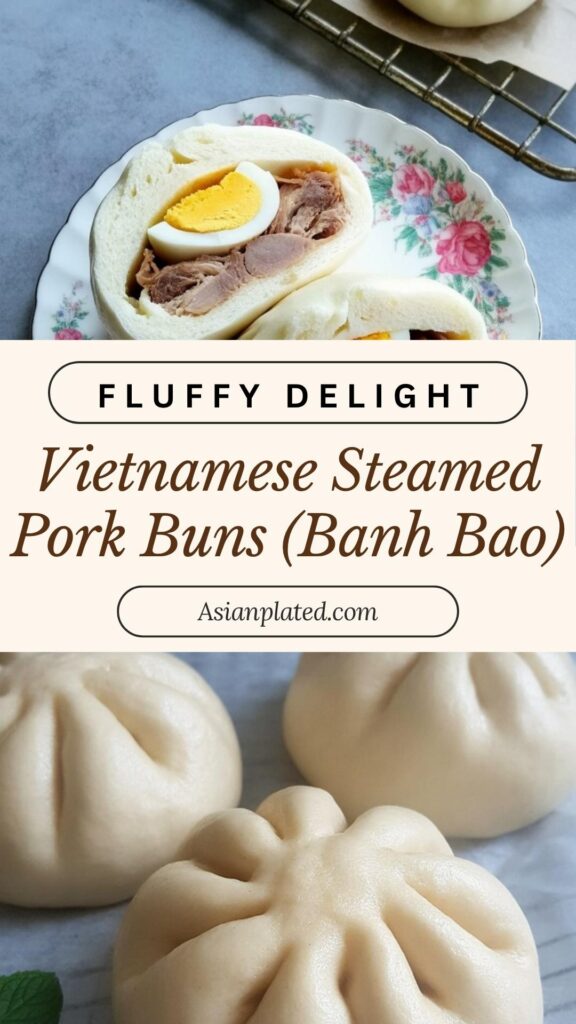
Tips and Tricks I’ve Learned Over the Years
- Mix the pork by hand: It changes the texture in the best way.
- Equal portions cook evenly: I use a scale so every bao is the same size.
- Don’t rush the rise: Warm spots in the kitchen (like near the stove) help the dough rise faster.
- Line with parchment squares: Prevents sticking and makes transferring easier.
- Pleating isn’t everything: Ugly bao still taste great, so don’t stress.
Make Ahead Advice
- Freeze for later: Steam fresh bao, cool completely, then freeze on a tray before bagging. They last up to 3 months.
- Partial Prep: You can make the filling a day ahead and store in the fridge. Dough is best made fresh.
Serving Ideas
- Breakfast with strong Vietnamese coffee.
- Afternoon snack with pandan milk or an avocado smoothie.
- Packed into lunchboxes for school or work.
Storage
- Fridge: Up to 3 days in an airtight container. Wrap individually in cling wrap to keep them soft.
- Freezer: Steam fresh, cool, then freeze for up to 3 months.
Reheating
- Steamer: 5–7 minutes from fridge, 8–10 minutes from frozen.
- Microwave: Wrap in a damp paper towel; 2 minutes from fridge, 3–4 minutes from frozen.
Vietnamese Steamed Pork Buns (Banh Bao)
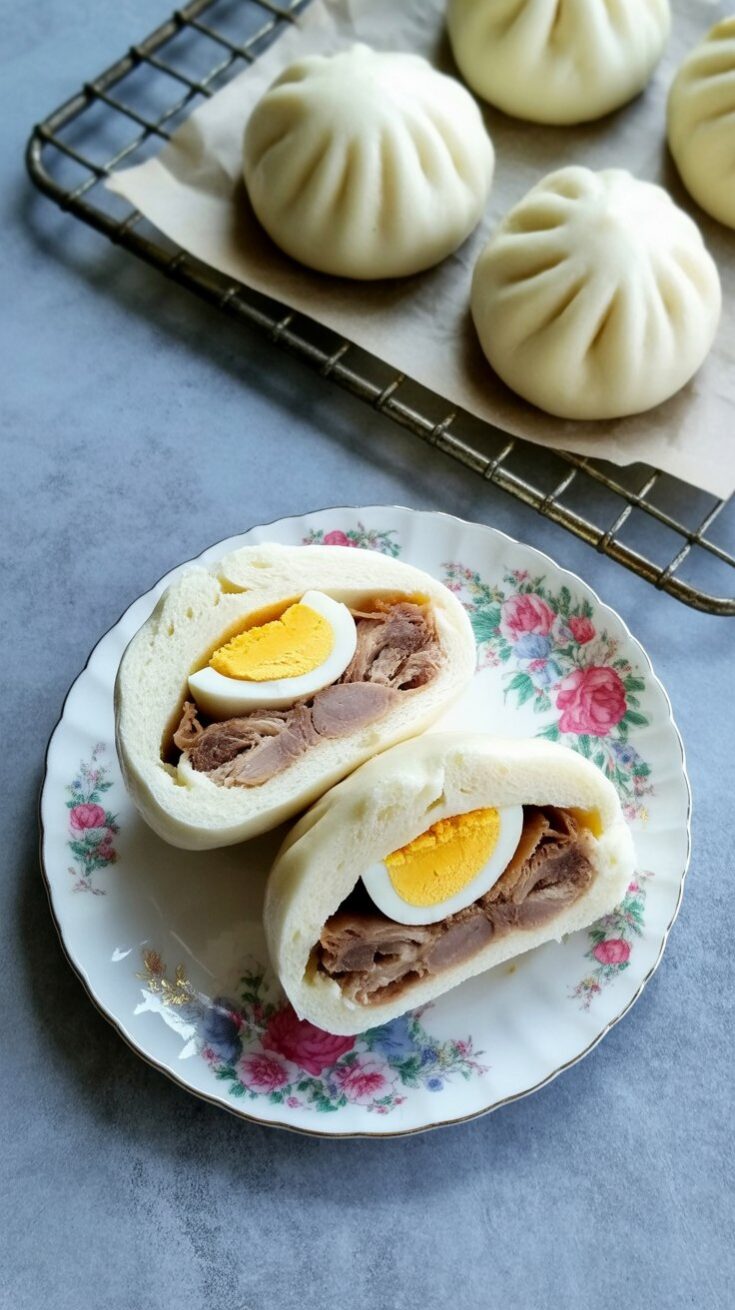
Soft, pillowy buns filled with savory ground pork, Chinese sausage, and a tender quail egg—these traditional Vietnamese steamed buns are the perfect handheld snack or breakfast treat.
Ingredients
For the Dough:
- 1 package Bột Bánh Bao flour premix (Kim Tu Thap with yeast recommended)
- 1 cup warm milk
- ½ cup sugar
- 1 teaspoon salt
- 1 tablespoon oil
- 1 tablespoon white vinegar (to help whiten the dough)
For the Filling:
- ¾ lb ground pork (slightly fatty for juicier filling)
- 1 tablespoon rehydrated wood ear mushrooms, finely chopped
- ½ cup finely chopped onion
- 1 teaspoon sesame oil
- 1 teaspoon fish sauce
- 1 tablespoon oyster sauce
- 1 teaspoon sugar
- ½ teaspoon salt
- ⅛ teaspoon black pepper
- 2 Chinese sausages, thinly sliced on the diagonal
- 12 cooked and peeled quail eggs
For Steaming:
- 12 parchment squares (about 3x3 inches)
- ½ cup vinegar (added to steaming water)
Instructions
- Make the Dough: Mix the warm milk with the yeast from the premix packet and let it sit for 10 minutes. Stir in the oil and vinegar. In a separate bowl, combine the flour, sugar, and salt. Gradually add the dry mixture to the wet, mixing on low (or by hand) until combined. Knead briefly until smooth, then cover and let rise in a warm place for 1 hour, or until doubled in size.
- Prepare the Filling: Boil the quail eggs, peel, and set aside. Slice the sausage into thin ovals. In a bowl, mix the pork, wood ear mushrooms, onion, sesame oil, fish sauce, oyster sauce, sugar, salt, and pepper until it forms a smooth paste-like mixture. Divide into 12 equal portions and shape into balls.
- Assemble the Buns: Divide the dough into 12 equal pieces. Roll each into a 3½–4 inch circle. Place one pork ball in the center, top with a quail egg and 2–3 sausage slices. Pleat and seal the dough using your preferred method (decorative pleats or simple fold-and-seal). Place each bun on a parchment square.
- Steam the Buns: Bring water and vinegar to a boil in a steamer. Reduce heat to medium-high, place buns in the steamer (leave space between them), and steam for 20 minutes.
- Serve warm and enjoy!
Nutrition Information:
Yield: 12 Serving Size: 1Amount Per Serving: Calories: 241Total Fat: 12gSaturated Fat: 4gTrans Fat: 0gUnsaturated Fat: 7gCholesterol: 43mgSodium: 497mgCarbohydrates: 22gFiber: 1gSugar: 11gProtein: 11g
Asianplated.com, occasionally offers nutritional information for recipes contained on this site. This information is provided as a courtesy and is an estimate only. This information comes from online calculators. Although allchickenrecipes.com attempts to provide accurate nutritional information, these figures are only estimates.
Common Questions
How long should I steam them?
About 20 minutes for this size. Larger buns need longer, smaller ones less.
Can I double or halve the recipe?
Yes, just scale all ingredients equally.
What if I can’t find premix flour?
Use a homemade mix with all-purpose flour, yeast, baking powder, sugar, salt, oil, and vinegar. It works, but texture will be slightly different.
Try other Vietnamese recipes:

